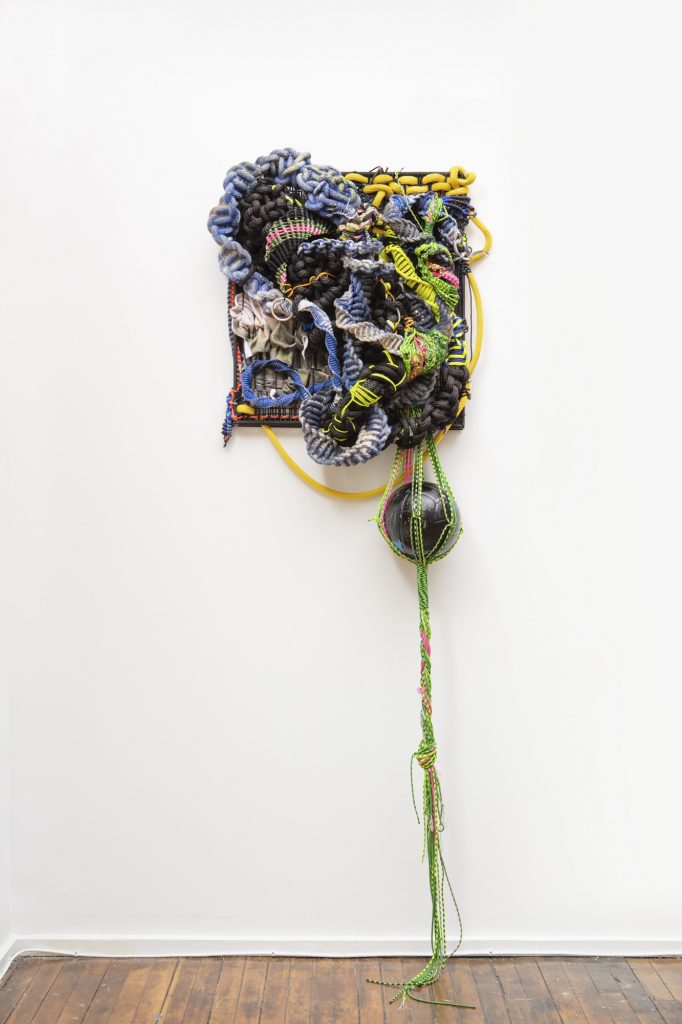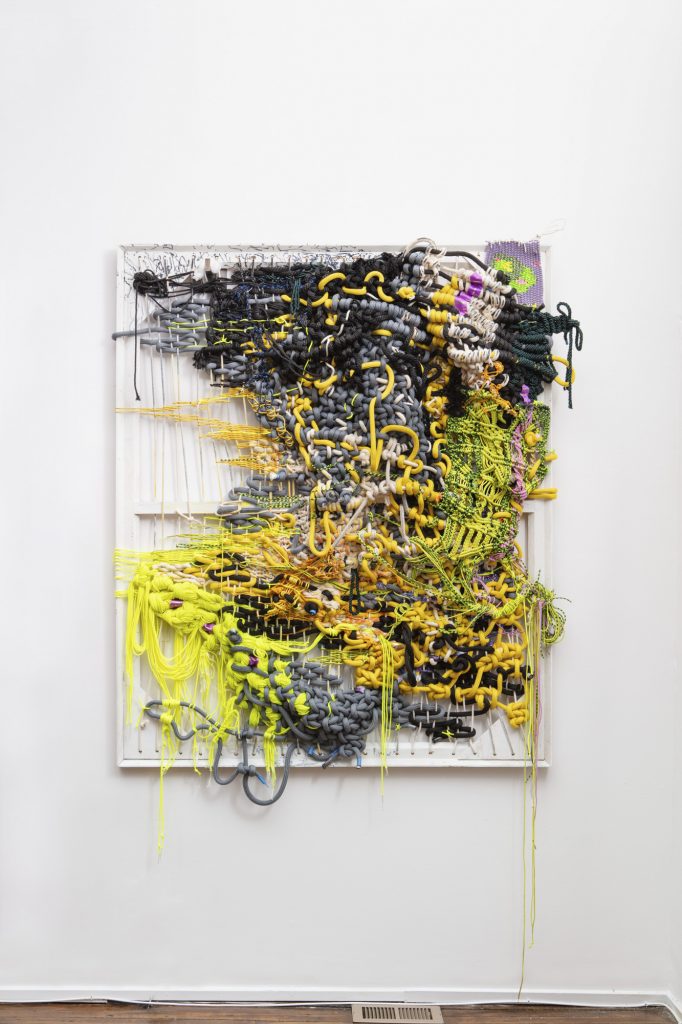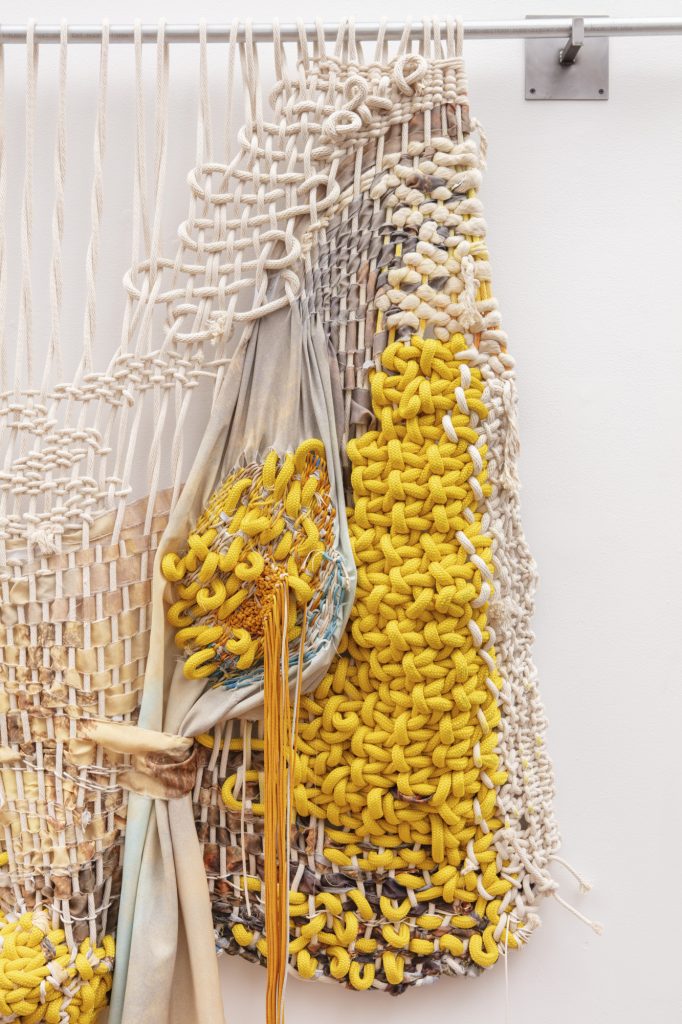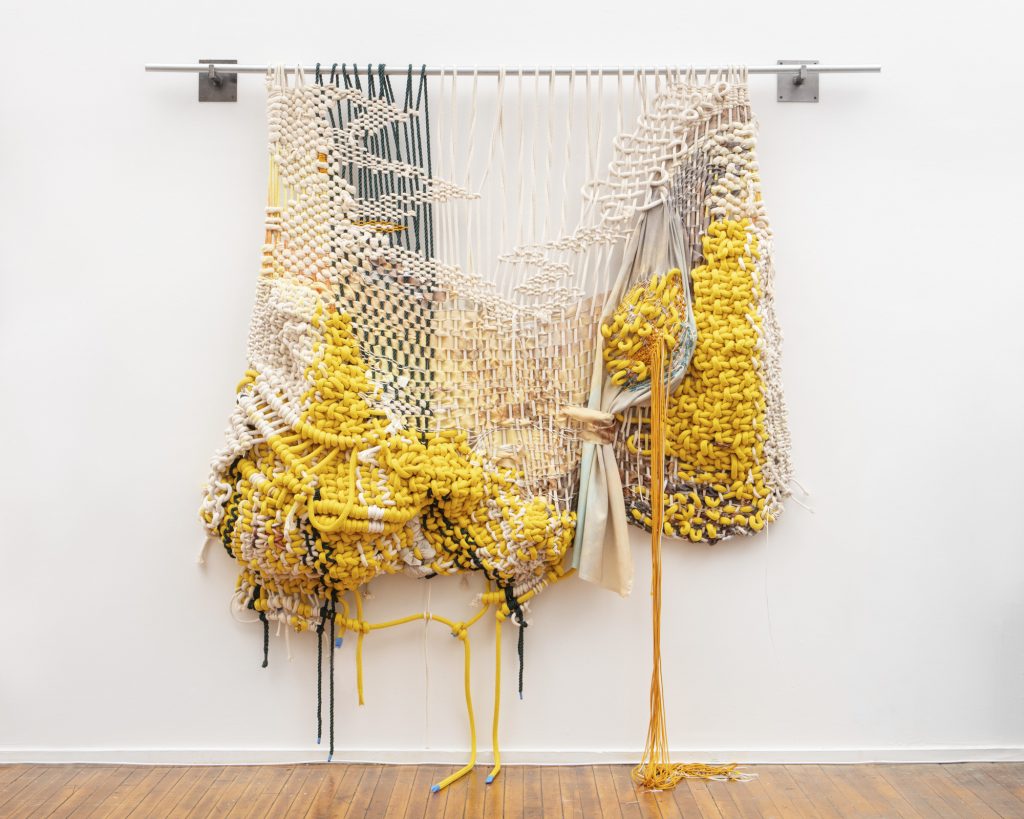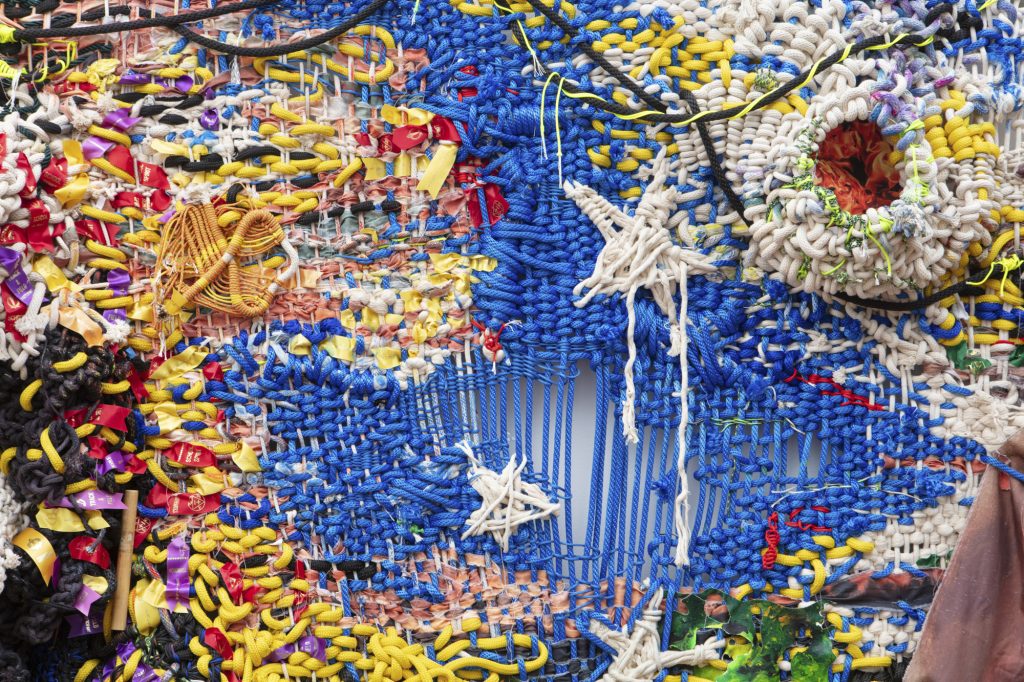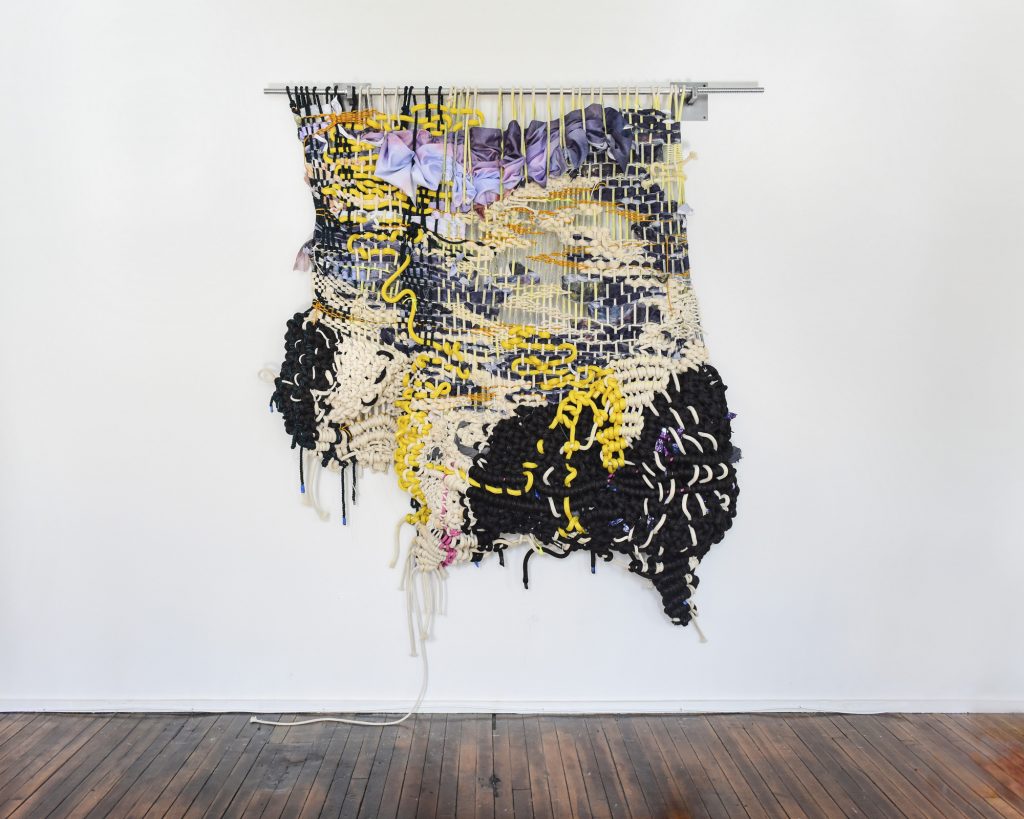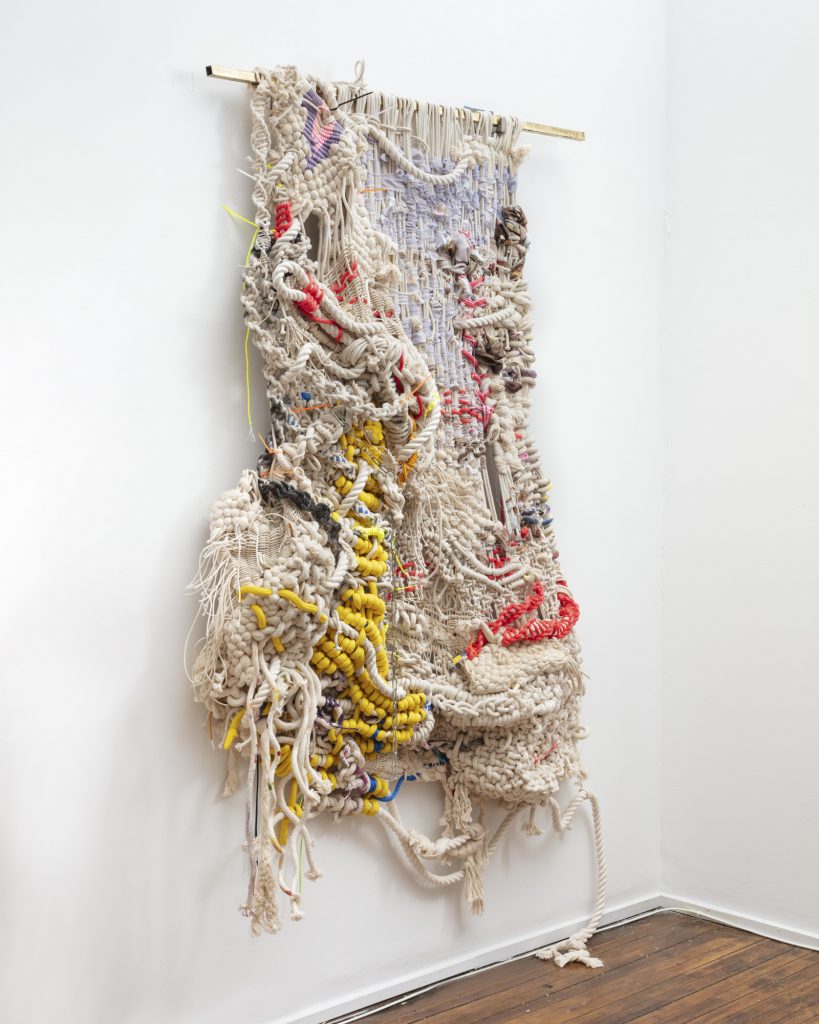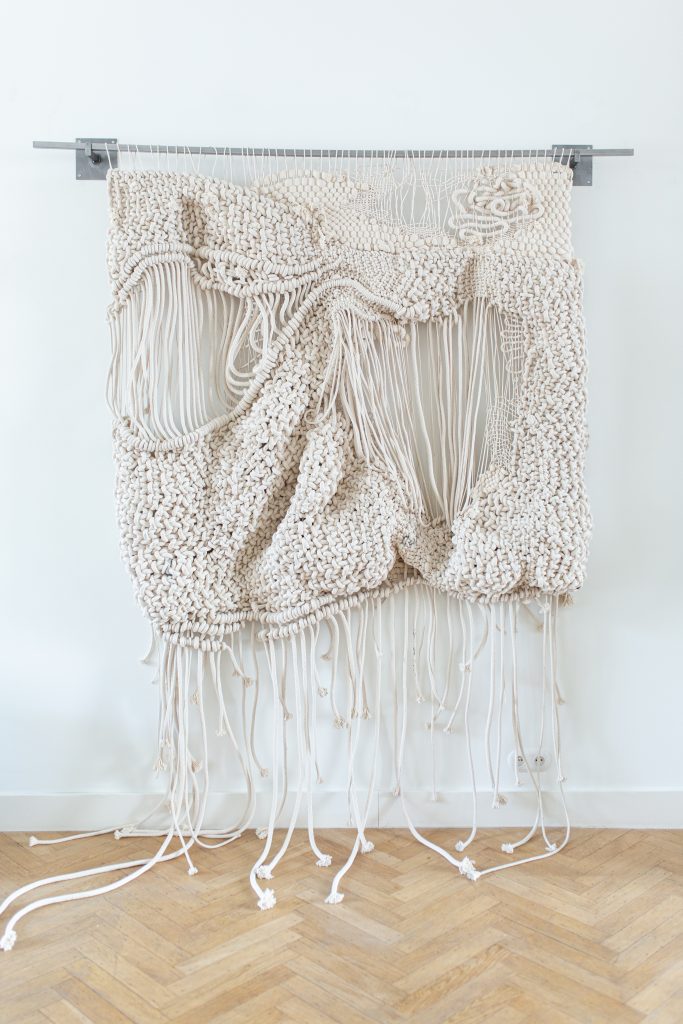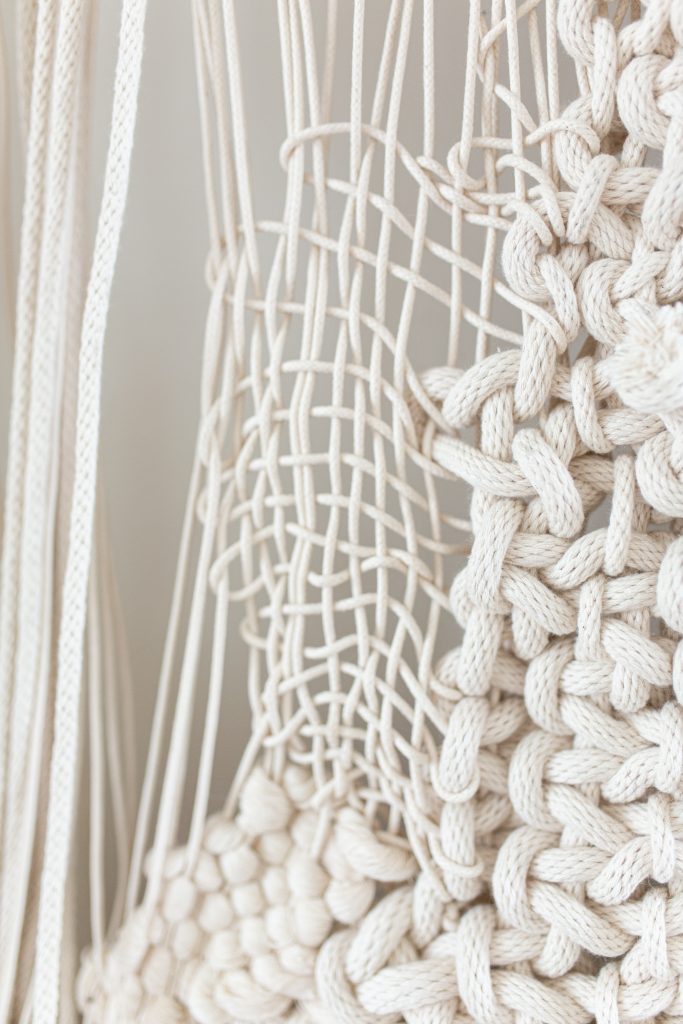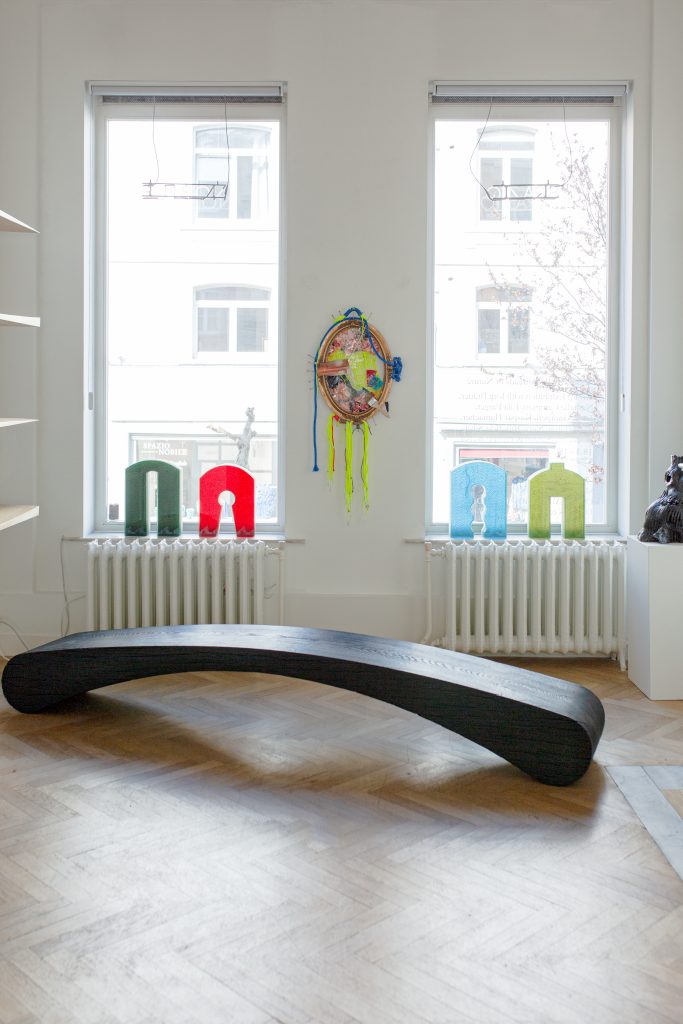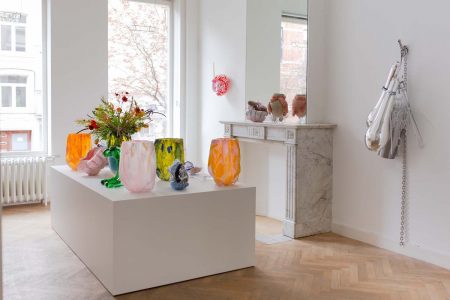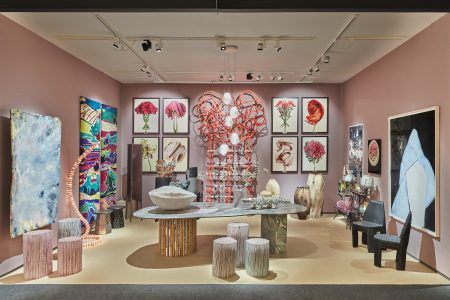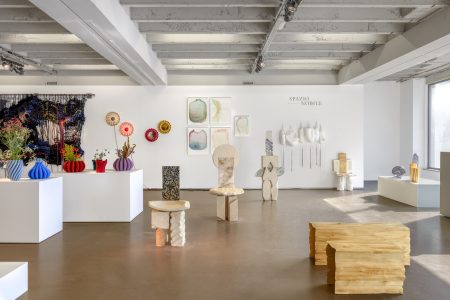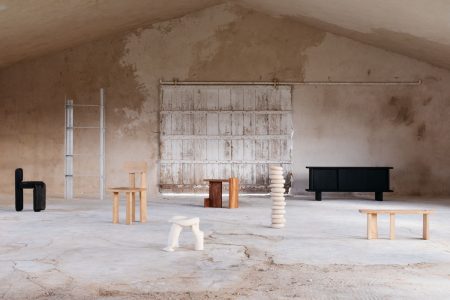Jacqueline Surdell: Paradoxical Process
U.S. artist Jacqueline Surdell draws upon her background as an athlete and painter to create large-scale textile pieces that twist and expand beyond the confines of the frame.
Jacqueline Surdell’s work embodies a tactile physicality, a suggestion of time and labour in its intricate process of creation. It offers structure, but one that is not easy to make sense of upon first glance. The U.S. artist draws upon her background as an athlete and painter to create large-scale textile pieces that twist and expand beyond the confines of the frame. Within these knots lie allusions to the subjects of each piece, left for the viewer to connect and unravel. TLmag speaks with the artist about the moments of transition entangled in these three-dimensional forms.
TLmag: How would you describe the way you shift between textile and painting?
Jacqueline Surdell (JS): I am an interdisciplinary artist with a focus in fiber. Primarily, I use rope and other industrial textile materials to reconsider painting histories and techniques through the lens of craft and material culture. My current body of work abstracts and questions ideas of landscape painting, specifically, as a flat, static, painted object. I am drawn to the ways landscape offers perspective on our current world through examinations of the past; suggesting alternative connections between historical memory and our present day.
TLmag: Can you tell me a bit about your background and how this has influenced your approach?
JS: I played competitive volleyball for many years and was recruited to play in college. For me, the studio is an evolution of my athletic practice. My Dutch grandmother is a landscape painter and the concept of ‘the studio’, making, seeing, and talking about art, has been a part of my life since a young age. Because of my Oma, I knew I would make art in some way. While I have always loved painting, after years of disciplined training, repetition, and challenges of both the mind and the body, I yearned for a more dynamic form of expression. This led to working with materials like rope, which I was familiar with handling due to its ubiquity as material for volleyball netting. What I found in that material exploration is that although each sculptural work was perceivably soft, the knots and repetition made that work inherently strong. These material qualities became a lens through which to look at the world; what else was seemingly soft, but actually strong, reliable, or even unbreakable?
TLmag: How do you view textile as a medium?
JS: Textile is transformative. Rope, specifically, is a material that contains pure potential. In my studio, rope transforms from limp lines into dense, expanded, evolved, three dimensional forms. Rope is sneakily strong – it can lay limp and folded and then be activated to carry and hold immense amounts of weight.
Rope embodies the paradox that is connection: coming together alongside the possibility of being tied down and controlled.
TLmag: What is your process of creating a composition, and how do you sense that it is complete?
JS: Before beginning a piece I make countless sketches and detailed outlines. These plans are then completely ruptured when my ideas meet physical form. The knots – the ways these pieces are built – are so sensitive to the material and the way I tie each knot that the final work often varies completely from my imagined form. There is an ongoing conversation between me and the work; a consistent back and forth, action and reaction. I never feel like my works are complete, and I often leave them ‘unfinished’ to suggest a sense of undoing. In other words, there is always more to do.
TLmag: Many of your pieces carry or envelop references to current events (political turmoil, elections, global heating). How does this questioning of institutional power structures relate to the labour of the body in your work?
JS: I think of my studio practice as a space that fluidly moves between physical and intellectual processing. The act of processing comes from repetitive work that engages both the right and left sides of the brain. Thinking through working or working through thinking. For me, the work is about those moments of transition between experiencing something (maybe it’s trauma or simply something new) and that transition between the thing happening, understanding, and then letting go, or coming out on the other end. These moments change you. You are transformed in some way. It is a paradoxical process of learning to accept what is out of my control while working towards something better.
TLmag: In your work the frame is presented in different forms: loom, canvas, sometimes a needle, and sometimes not there at all. You also often use elements of a building or other materials as frames for installation works. Is this a conscious element?
JS: The frame originated in my efforts to rethink painting traditions. The idea of a loom as a frame and the frame as a window is a curious relationship that I am continuing to work with. While I don’t have a direct or straightforward answer, what I do know is that in many ways this work serves to reveal and complicate our understanding of objects and desires to create something altogether new, using what already exists as both physical and conceptual material.
Jacqueline Surdell’s work is on view at the Spazio Nobile exhibition Threads of Nature until 18 July, and Bedford Gallery’s A Beautiful Mess: Weavers and Knotters of the Vanguard until 13 June. From 5 June, her work will be exhibited in a solo show, I started from a place of embracing that which I cannot control, at Patricia Sweetow Gallery.
All images courtesy of the artist unless stated otherwise.
